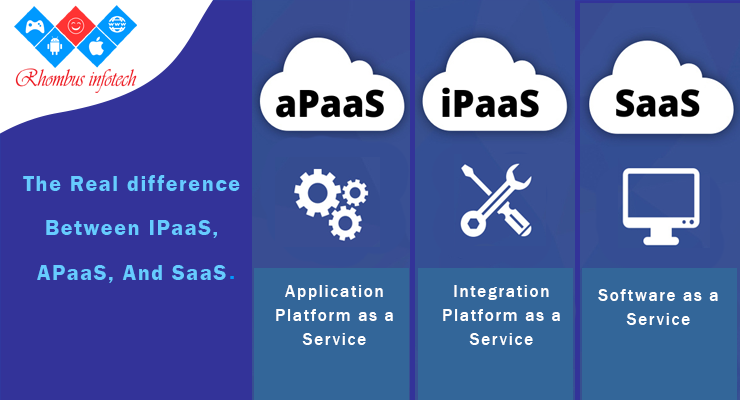APaaS, IPaaS, and SaaS stand for the three main categories of cloud computing. Cloud computing is the practice of using a network of different servers that host, store, manage, and process data online.
When you make a final decision to opt for cloud services for your infrastructure deployment and application, it gets important for you to understand the major differences between the different categories of cloud services.
Here’s a quick guide regarding the incorporation of principal integration type’s iPaaS, aPaaS providers, and SaaS, along with the key differences and advantages of employing them that you ought to know!
Whenever companies refer to cloud procurement services, then usually there come three different cloud service models. And under these considerations, there comes Integration Platform as a Service (IPaaS), Application Platform as a Service (APaaS) And Software as a Service (SaaS).
IPaaS (Integration Platform as a Service)
IPaaS solutions are primarily a suite of cloud services that stimulate data integration flows between the endpoints, which are likely to be executed, governed, and developed. These endpoints can be either the combination of cloud-based processes, applications, services, or data within single or multiple administrations. Well, the best part about these endpoints is that – they are all connected with one another in one single platform.What is iPaaSIPaaS solutions are primarily a suite of cloud services that stimulate integration flows between the endpoints, which are likely to be executed, governed, and developed. These endpoints can be either the combination of cloud-based processes, applications, services, or data within single or multiple administrations. Well, the best part about these endpoints is that – they are all connected with one another in one single platform.
IPaaS can be addressed as a platform solution where you can manage and develop connected application integration in one place, which is often aided by EDI (Electronic Data Interchange) applications.
IPaaS (Integration Platform as a Service) Highlights
Cloud-specific functions
Management Of integrations
Capable of integrating new & legacy applications
Scalability
APaaS (Application Platform as a Service)
This Application Platform as a Service is one of the self-contained cloud environment that will let your business to do the deployment, management, and maintenance of your business applications effectively. With this, you will be provided with a diverse foundation & tools to deploy and develop various business applications quickly. In such a case, the vendor is going to provide you with the infrastructure like data storage, servers, and networking, which would be of great help.
We can describe it as a service solution that will streamline business application deployment processes. With this, you will also get the facility of automation so that you can deploy & develop the business application process in a short span of time.
This way, your business will be able to do the quick app development & delivery process for your clients. In fact, this Application Platform as a Service (APaaS) is going to offer your business with high control and high productivity. It makes the coding process for numerous platforms as a service slow down the delivery of business applications and makes automation take place by making you build these applications in a faster way.
APaaS (Application Platform as a Service) Highlights
Scalability, load balancing, and failover
Web-based user interface
Multi-tenant architecture
Services to develop, test, deploy, host, and maintain applications
SaaS (Software as a Service)
The SaaS (Software as a Service) is one of the most common cloud deployment models which are employed by numerous businesses. Primarily, it refers to business applications delivered on the internet, which is usually managed by some third party. In this case, a user will not be required to worry about downloading, updating, or hosting of any software distribution models though some will require plugins. This is primarily because Software as a Service apps are going to work and accessed through a Web browser, eradicating the requirement of installing software ecosystem on a user’s system.
However, earlier, SaaS providers like Salesforce have started to charge some monthly subscription charges in order to utilize the service, thereby making different businesses to acquire the software at a cost-effective price at a more expectable expense.
Maximum companies nowadays use SaaS business applications, and most of these applications are purchased after paying some annual or monthly charges. But now, the SaaS model has made everything extremely simple for businesses to deploy these business apps and given a new boom to the modern cloud integration platform revolution arena.
SaaS (Software as a Service) Highlights:
Customization and configuration
Accelerated feature delivery
Open integration protocols
Collaborative and social functionality
Conclusion
The choice of cloud computing rely on the extent and complexity of your business or enterprise.

